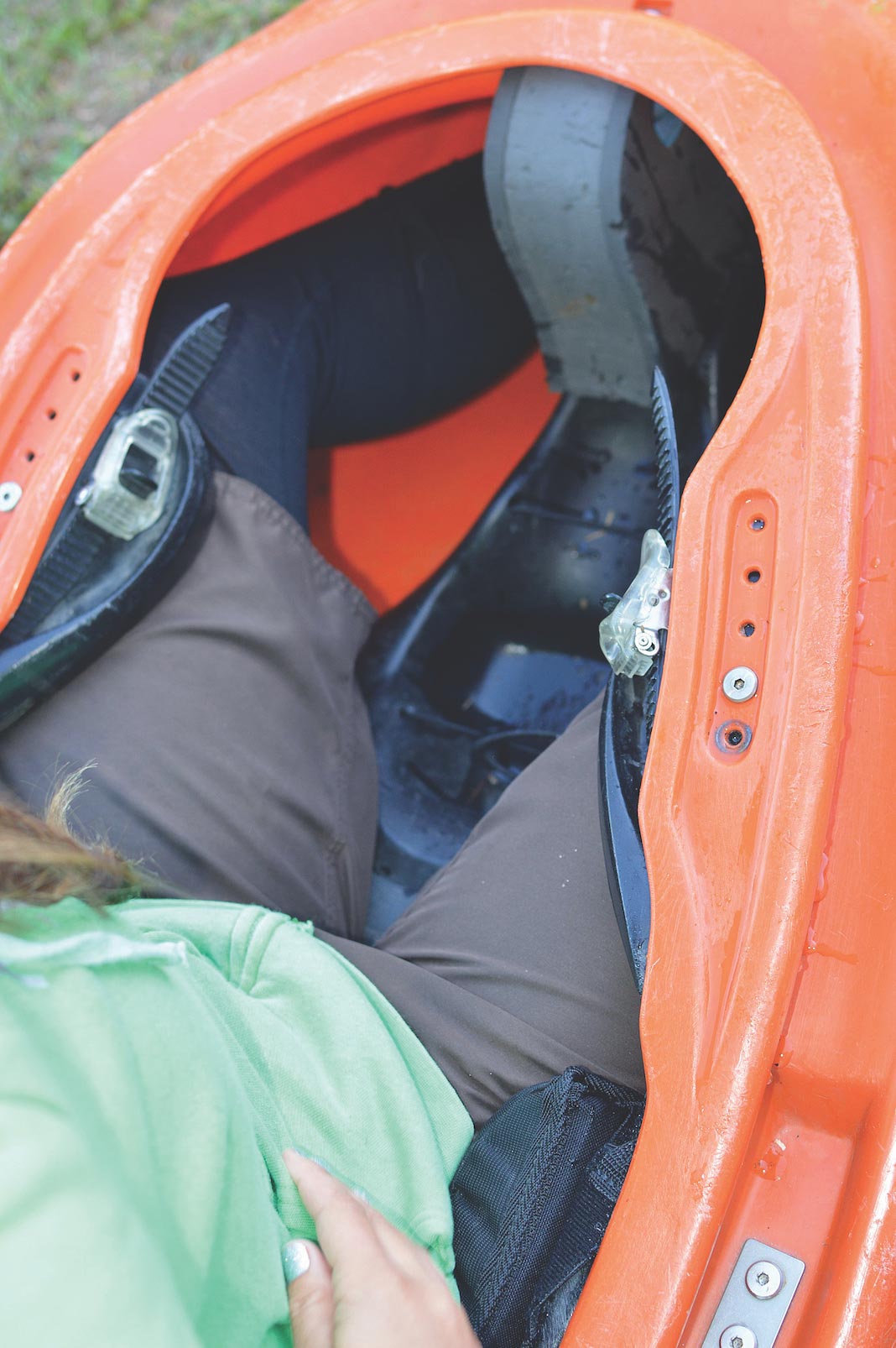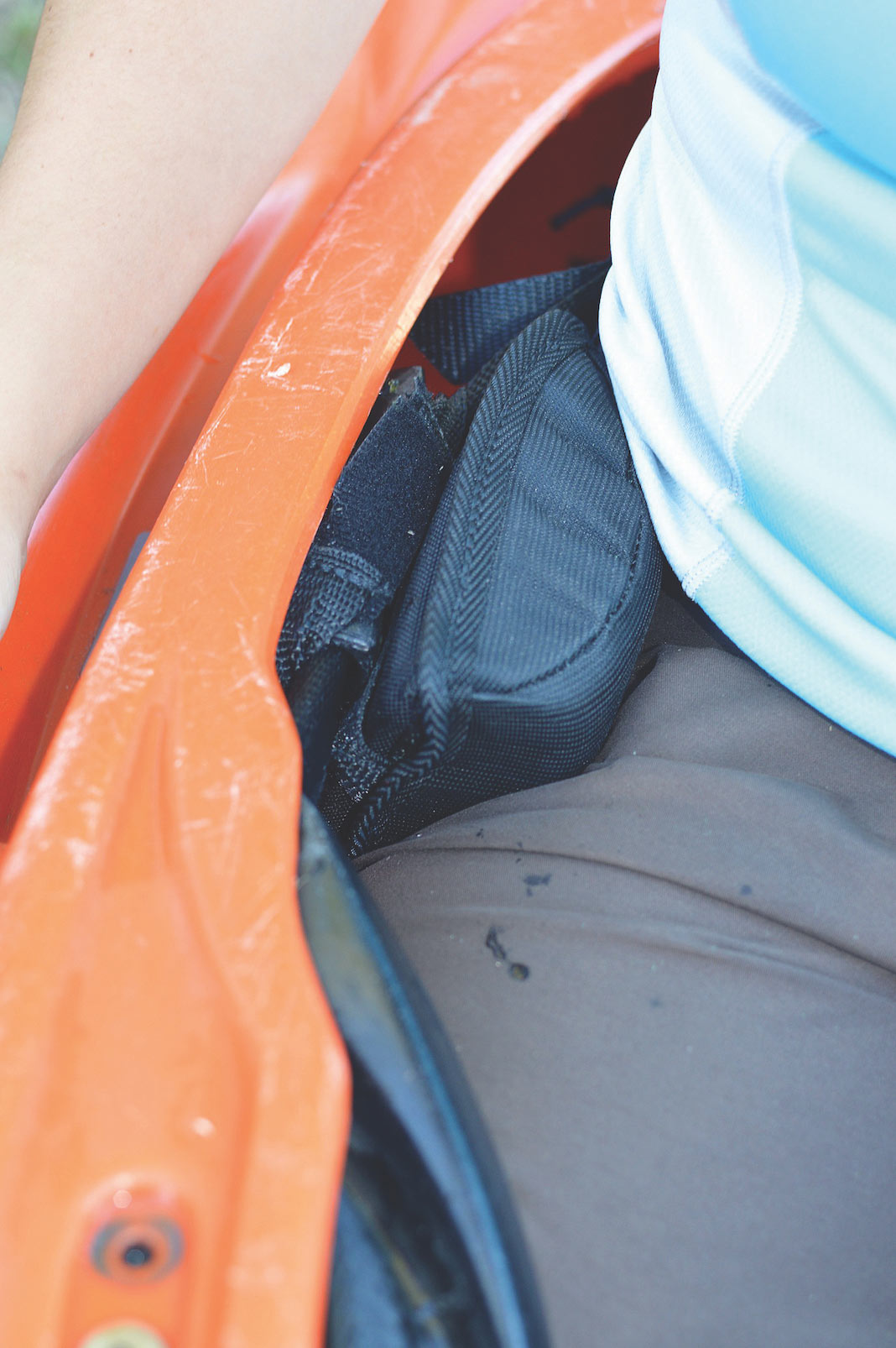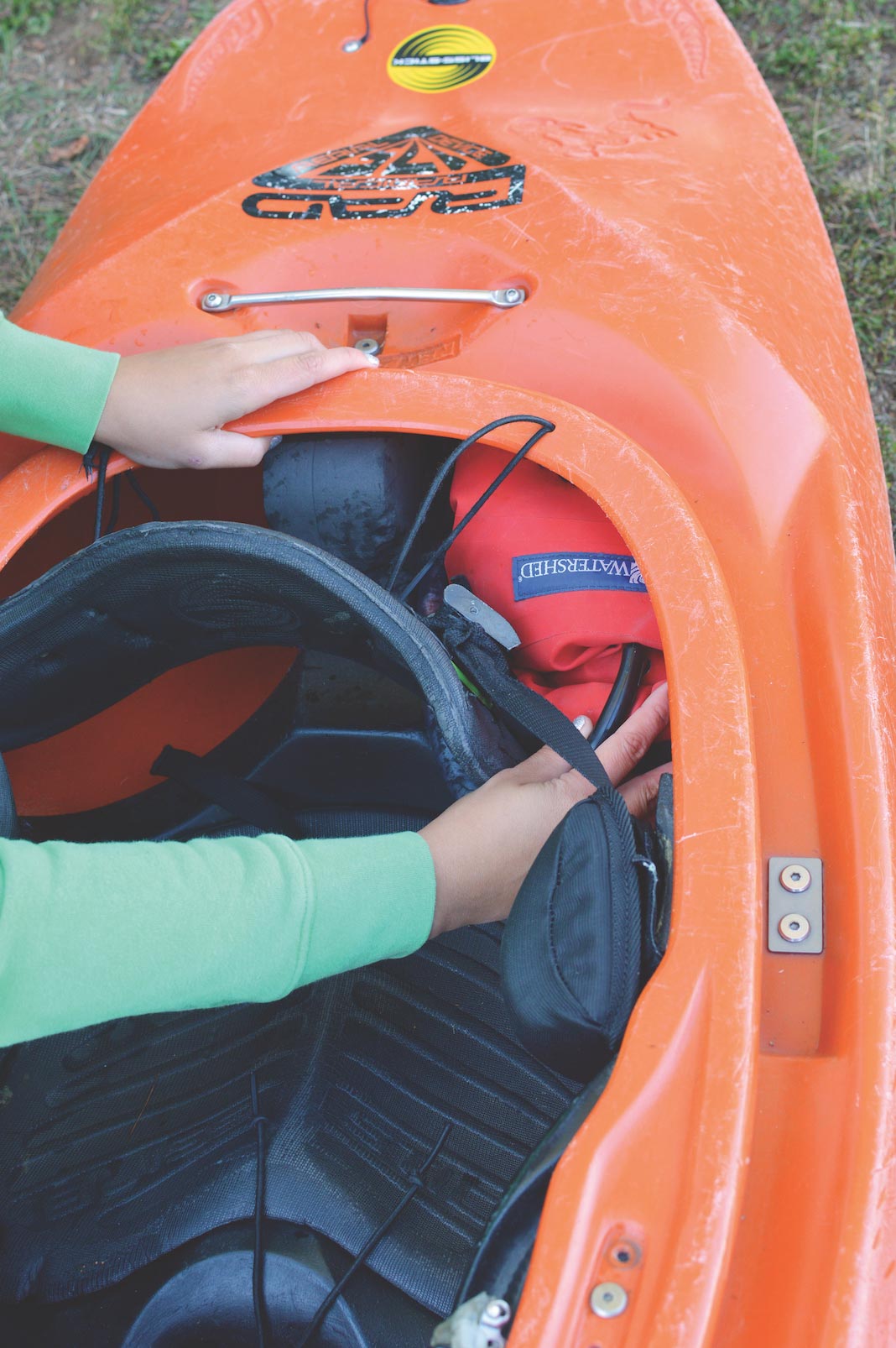Outfitting the cockpit of a kayak can make all the difference for those who are struggling with their roll, unable to paddle consistently, and worse, spending a lot of time on shore trying to stretch out cramps.
“It’s pretty obvious who spends the time outfitting their boat properly,” says Billy Harris, a pro-kayaker and whitewater instructor.
Luke Vollmerhaus of Aquabatics Calgary agrees. “Outfitting is what keeps you comfortable and in control of your boat,” he explains.
Adjust your seat placement
To get yourself situated properly, begin with your seat since it determines the placement of the rest of your outfitting. Most kayak manufacturers send out boats with seats centred, but depending on your size and boat model, you may need to do some adjusting by moving the seat backwards or forwards, and likely adding a foam foot block.
Build foot blocks
To build a foot block, use a large piece of mini-cell foam, which you can buy from your local paddling shop or in the Paddling Buyer’s Guide. You may have to cut it down or add foam shims. In the end you should be sitting frog-legged, with your legs slightly bent at the knee and feet resting on your foot block.

“Foot blocks are an integral feature of many playboats, providing a solid point of contact for your feet,” explains Mark “Snowy” Robertson, head designer at Dagger Kayaks. “Taking the time to correctly adjust, trim and configure your foot block can make a big difference.”
Adjust your thigh braces
Once your seat and foot block are locked in, adjust your thigh braces. There’s no right or wrong placement; some people like them high up on the leg towards the thighs, while others paddle with the braces cupping the knees.

If you’re having a hard time keeping your legs flexed, Harris suggests placing a foam wedge under your knees. “It can be really helpful, especially if you’ve been finding that your feet are falling asleep,” he explains.
Tighten your backband
Tighten your backband when you think your thigh braces are in the right position. The band should sit on your lower back, just above your hipbones, and should be just tight enough to make you sit up straight.
Add or remove foam from hip pads
One of the most important aspects of outfitting your whitewater kayak is the hip pads. “Sit in the boat without any hips pads, then determine how much room on either side of your hips you want to fill,” says Snowy.
The pads should sit on and above your hip bones, following the natural curve of your hips. Most kayaks come with fabric pockets, which allows you to add or remove foam.
Add float bags
Last, but certainly not least, are floatation bags. While they don’t affect how you fit in your boat, they are an important piece of outfitting—especially if you are a newbie.

“Float bags take up space in your kayak to displace water when your boat fills after swimming,” Vollmerhaus explains. “More than anything, they are there for the safety of the person rescuing your boat after a swim. At least one is necessary as a simple courtesy to the paddlers with you.”
Outfitting your kayak takes patience, time, and a bit of trial and error, but at the end of the day, you reap the rewards. Once you have it dialled in, spending all day in your boat will be a pleasure, not a pain.




